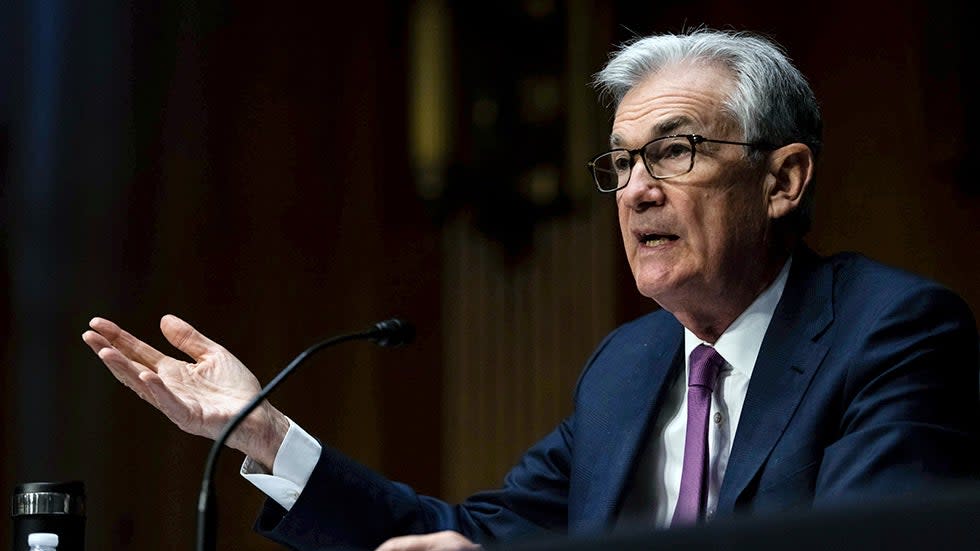All eyes on Federal Reserve as interest rate hikes loom

The Federal Reserve is under intense scrutiny this week as the bank's monetary policy arm plots a path out of high inflation.
After slashing interest rates and deploying trillions in stimulus to shield the U.S. economy from the coronavirus pandemic, the Fed is grappling with how to pull back that support while preserving the recovery.
The rapid rebound f rom the depth of the crisis brought the unemployment rate down to 3.9 percent in December - just 0.4 percentage points above pre-pandemic levels - but stoked consumer prices 7 percent higher over the past year.
The Federal Open Market Committee (FOMC), which sets Fed interest rates, will cap off a two-day meeting Wednesday with a new statement on its plans for steering the economy. Federal Reserve Chairman Jerome Powell will also address reporters Wednesday and is sure to face tough questions about the bank's plan to cool inflation.
Fed watchers expect the FOMC to hint toward a March interest rate hike and potentially announce a quicker end to monthly bond purchases. The Fed may also lay out plans for allowing nearly $9 trillion in Treasury and mortgage bonds - purchased over two years to keep financial markets flowing - to mature and pull cash back into the central bank.
Even so, the FOMC is unlikely to hike rates or take any action to reduce stimulus on Wednesday, despite mounting pressure from inflation hawks, Republican lawmakers and some investors who believe the Fed has fallen behind the curve.
"They'll continue to talk hawkish on inflation and act dovish," said Daniel Alpert, managing partner at New York investment firm Westwood Capital, in a Tuesday interview.
Alpert said he expects the Fed to emphasize its commitment to bringing inflation down without taking surprise measures and catching markets off guard. He also believes inflation will begin to fade as dwindling savings, a lack of federal stimulus and the omicron variant sap household spending.
"You're going to have to come face-to-face with what the true nature of consumer demand looks like in an economy that's no longer supported by this enormous volume of government transfers," Alpert said.
The emergence of omicron has thrown a wrench in the Fed's pivot toward inflation-busting after patiently watching prices rise far faster than bank officials and most economists expected.
The U.S. recovered all but 600,000 of the jobs lost to the onset of the pandemic, filled the hole in gross domestic product left by the recession and saw a strong rebound in consumer spending through 2021. But the rapid recovery did little to bring millions of workers who left the labor market back to the job hunt, creating unprecedented demand for labor.
Powell acknowledged in December that while the U.S. labor market was still not as strong as it was before the pandemic, the Fed couldn't afford to keep stimulus pumping amid a labor shortage. The Fed chairman called high inflation "a severe threat to the achievement of maximum employment" during a January confirmation hearing.
"Fed officials have expressed rising discomfort with elevated inflation and stronger confidence in the recovery of the economy and the labor market despite the winter slowdown due to the spread of Omicron," wrote Kathy Bostjancic, chief U.S. financial economist at Oxford Economics, in a Monday research note.
Like most Fed watchers, Bostjancic expects the Fed to raise its baseline interest rate level from zero to 0.25 percent, the range set in March 2020, to 0.25 to 0.5 percent. She argued a 0.5 percentage point hike "would set an overly aggressive tone for the financial markets and corporate America."
Wall Street has been roiled for weeks by the Fed's pending decision, along with concerns about the economic impact of omicron and a potential Russian invasion of Ukraine. Stocks swung wildly on Monday and Tuesday after a week of steady losses, bond yields have climbed on the prospect of higher interest rates and businesses are bracing for another coronavirus-driven hit to profit margins.
While omicron has dampened consumer activity, suppressed hiring, spurred more layoffs and forced millions to stay home from work, it is not yet clear if the drop in demand will yield lower inflation.
The emergence of the delta variant last year largely shifted consumerw demand into goods purchases while factories and suppliers struggled with shutdowns, bottlenecks and quarantines. Some economists are concerned omicron could have a similar impact.
"The Delta variant showed that suppressing a more infectious variant can require more severe restrictions on economic activity and that supply disruptions in other countries can have larger spillover effects on the US economy. Omicron has already caused a disruptive wave of worker absenteeism in the US and threatens to be more disruptive abroad, especially in China," wrote Goldman Sachs economist David Mericle in a Saturday research note.
"Supply-side problems including labor shortages and supply chain disruptions are likely to last a while longer. And more importantly, wage growth, rent growth, and short-run inflation expectations are all likely to remain too high for the FOMC's comfort," he added.
